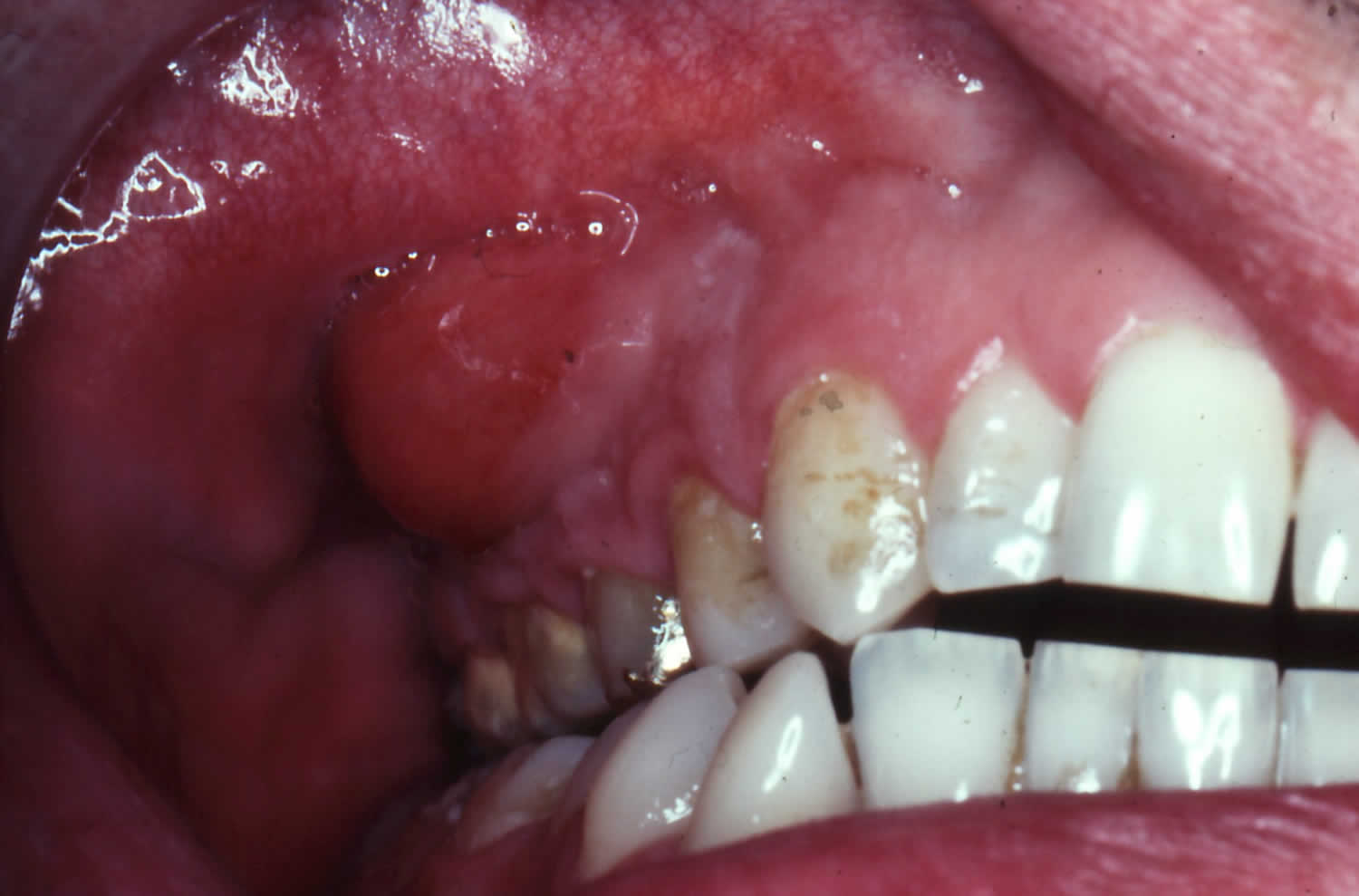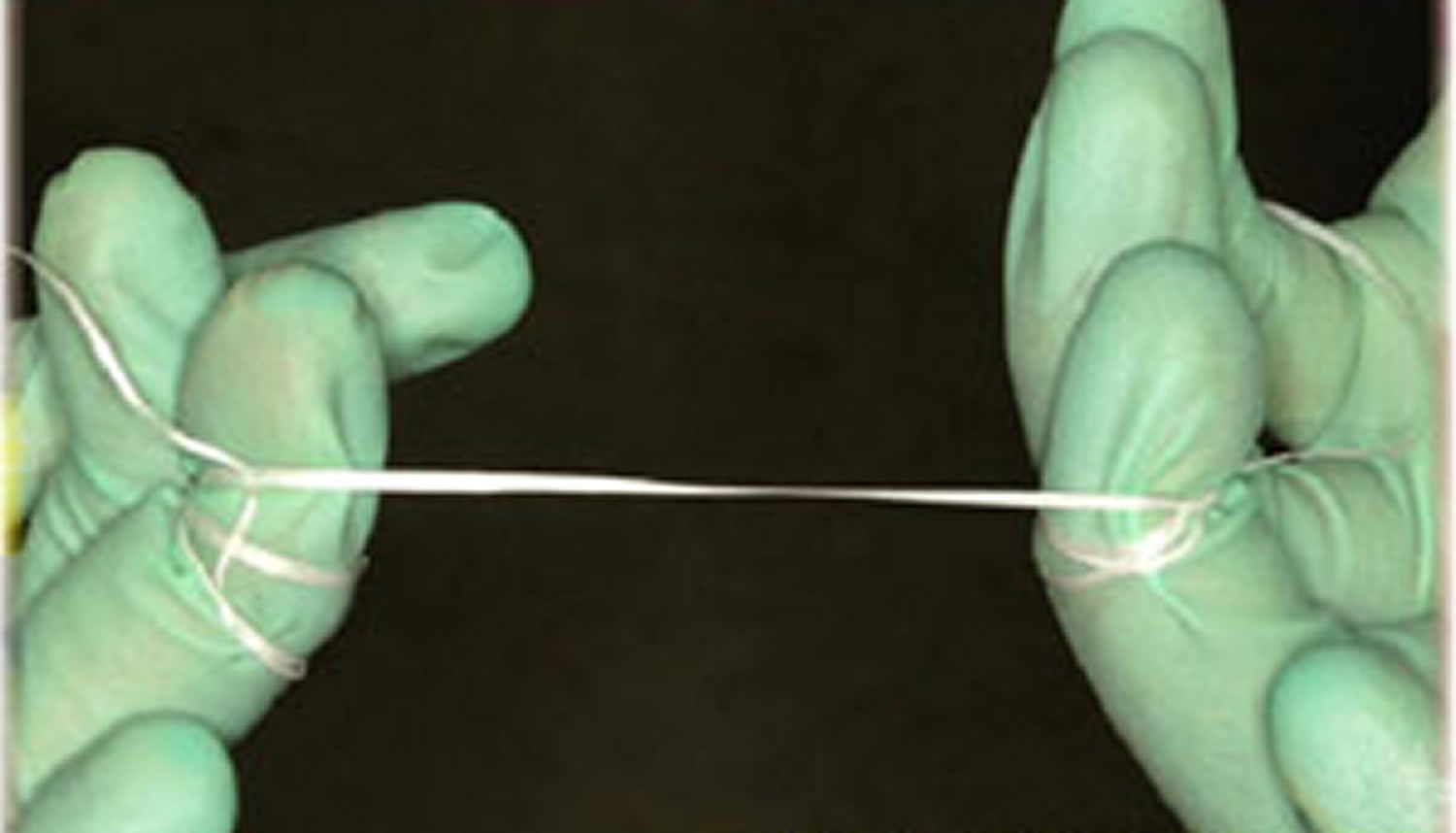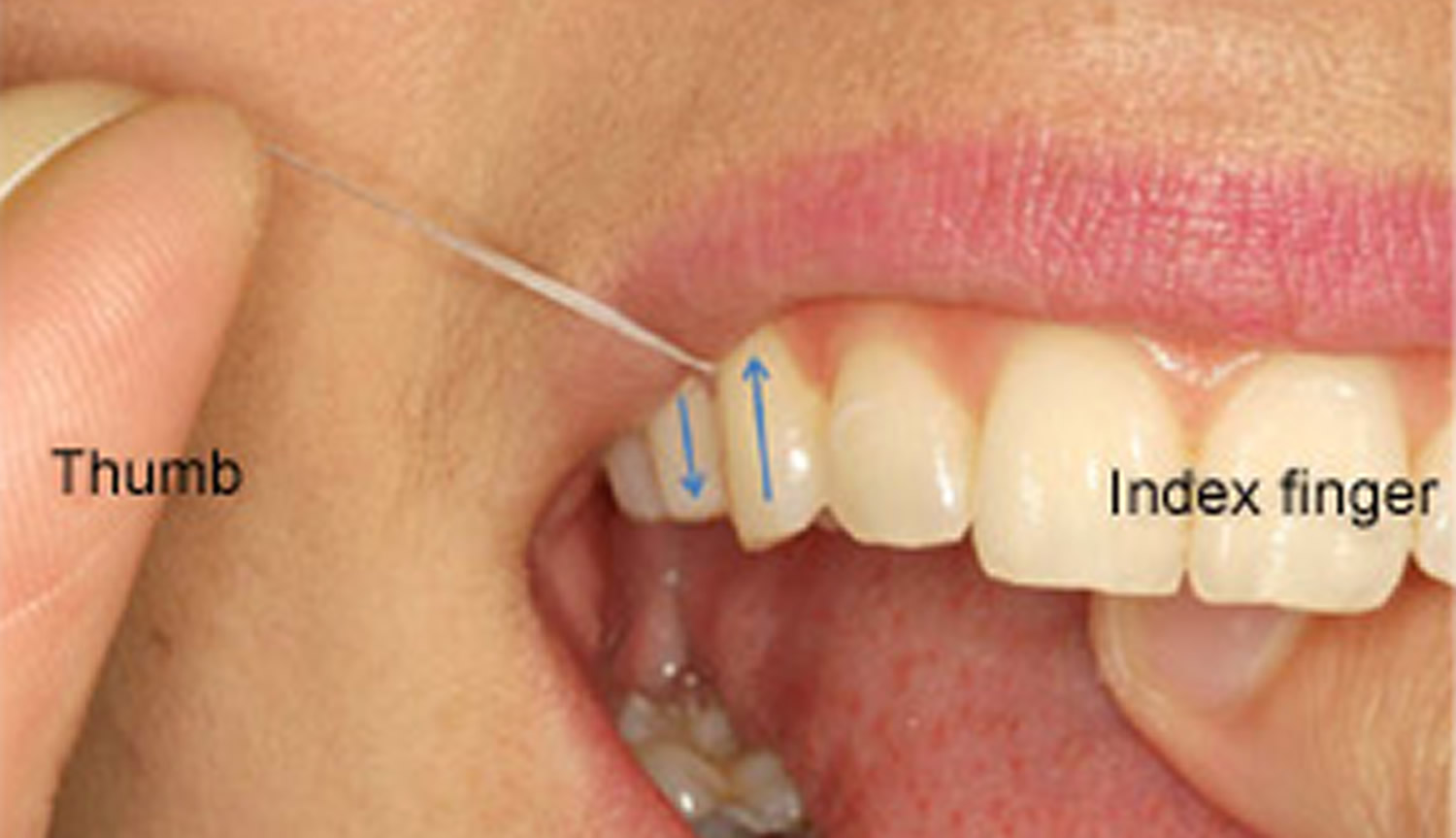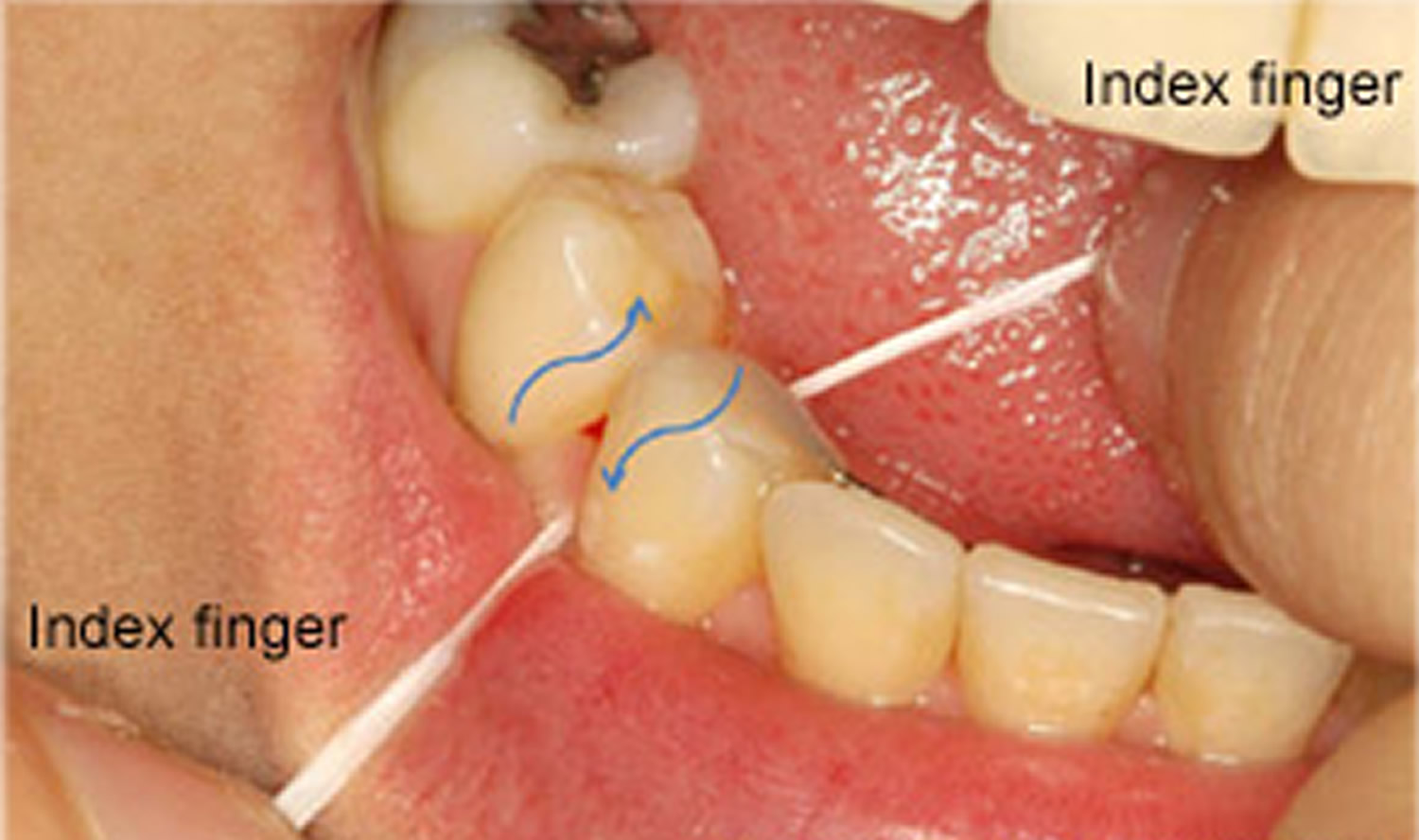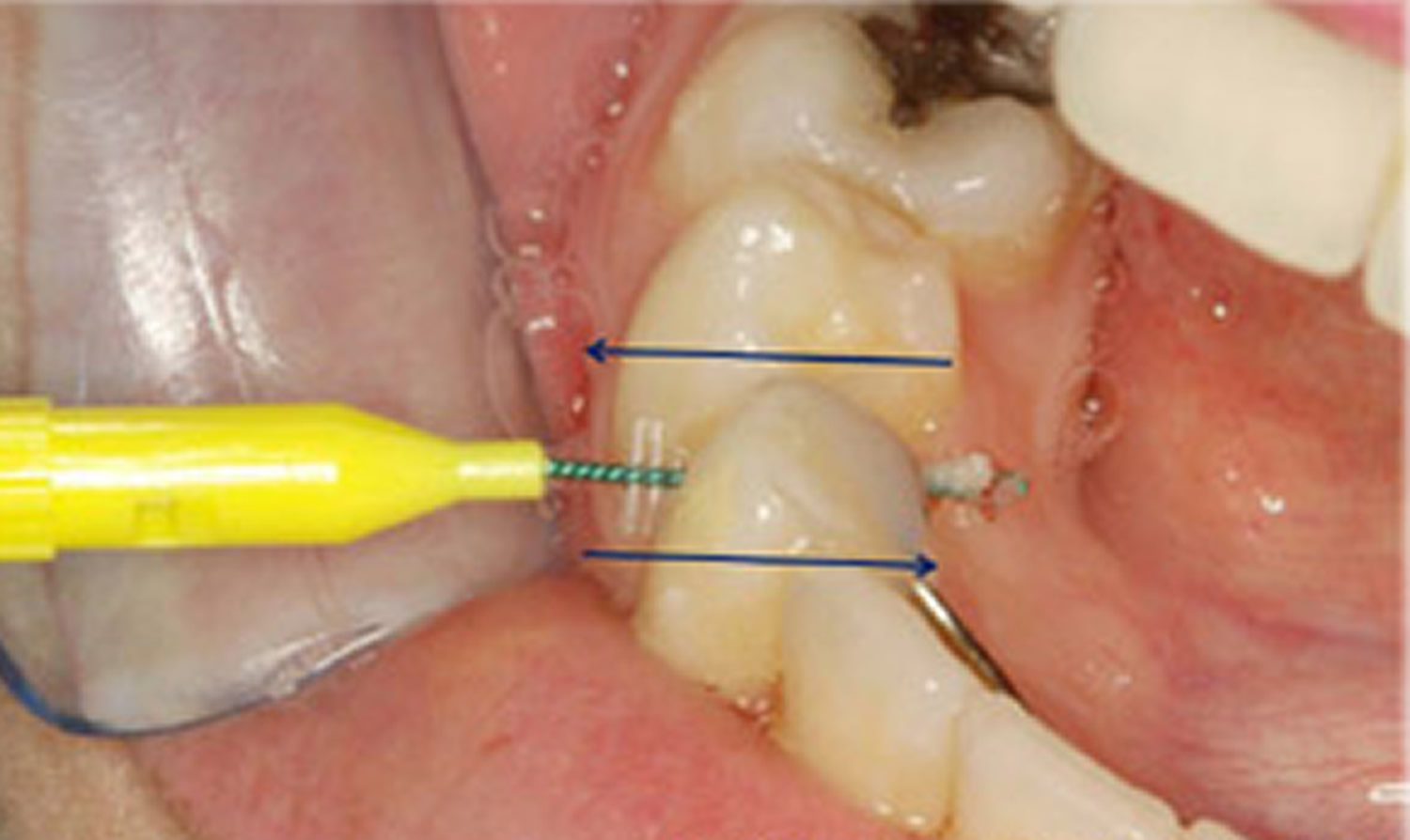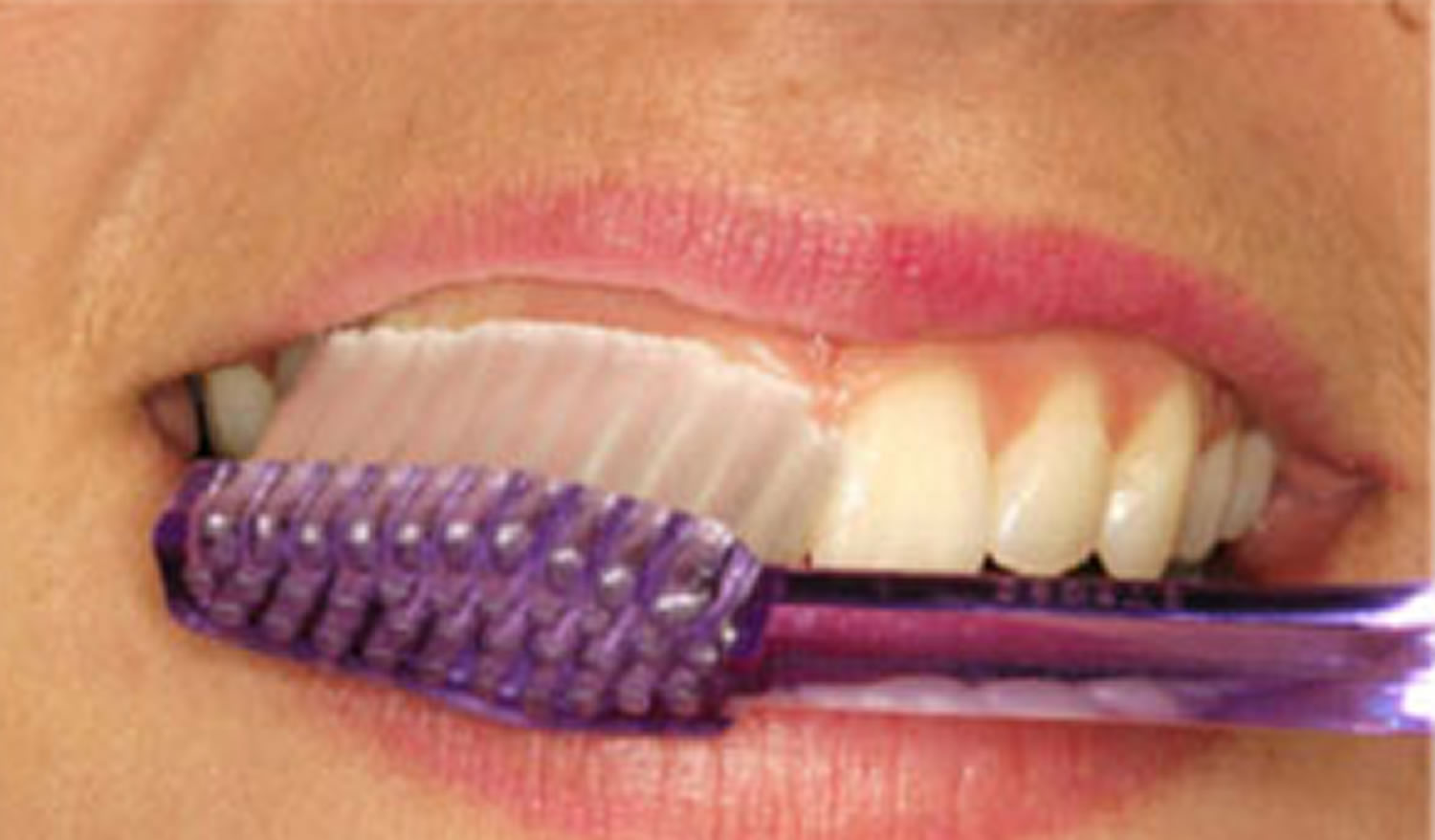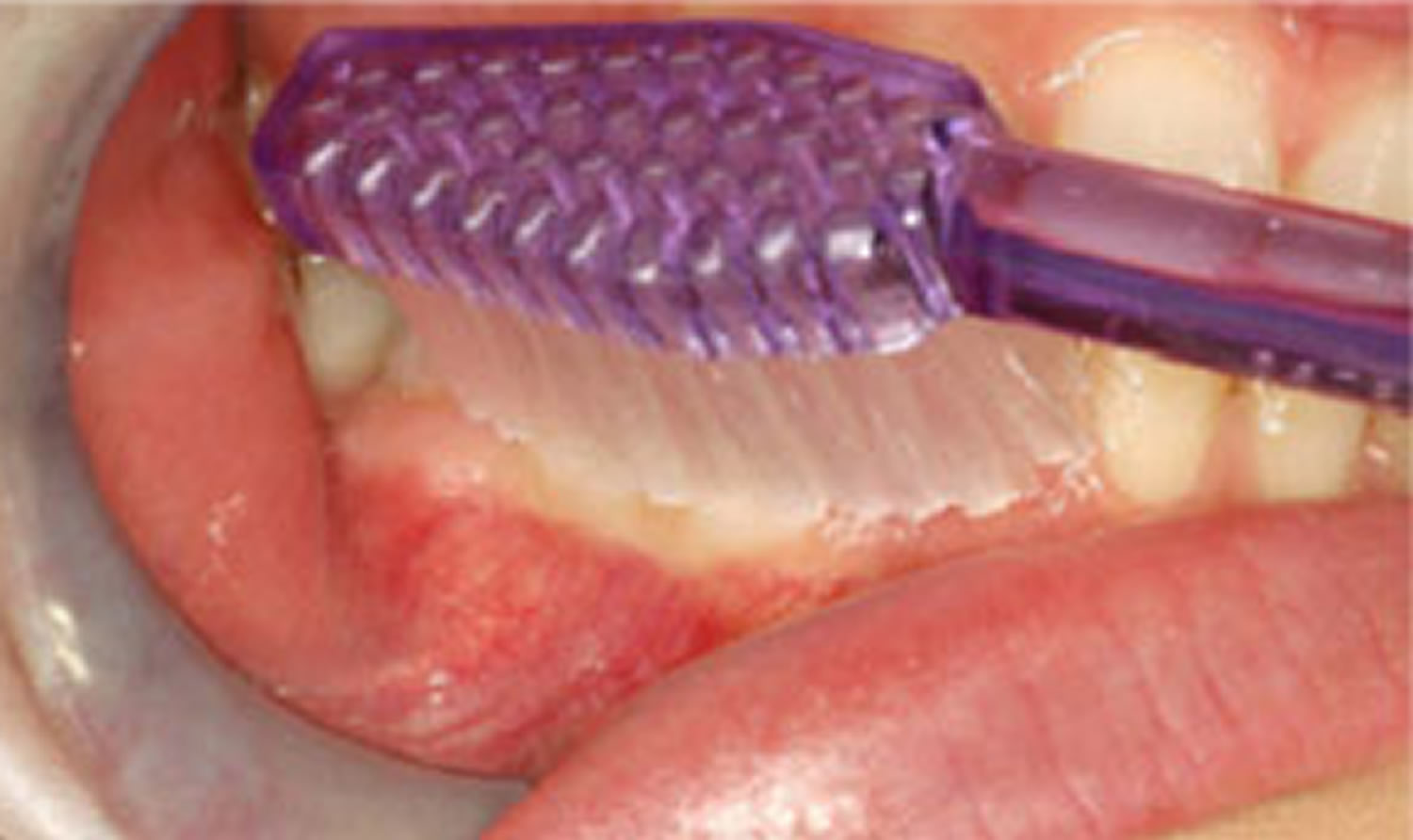Contents
What is an abscess tooth
A tooth abscess or dental abscess is a collection of pus that can form inside your teeth, in the gums, or in the bone that holds your teeth in place. Tooth abscess or dental abscess is caused by a bacterial infection.
The abscess can occur at different regions of the tooth for different reasons.
- An abscess at the end or at the tip of the root of a tooth is called a periapical abscess. A periapical tooth abscess occurs when bacteria invade the dental pulp — the innermost part of the tooth that contains blood vessels, nerves and connective tissue. A periapical tooth abscess usually occurs as a result of an untreated dental cavity, an injury or prior dental work.
- An abscess in the in the gums next to a tooth root is called a periodontal abscess.
A dental abscess should be considered when a person reports severe pain, has poor dental hygiene, and lack of adequate dental follow up, admit to dental trauma that was not repaired, localized pain that is reproducible with palpation, facial redness and swelling, difficulty opening mouth (trismus), difficulty swallowing (dysphagia), fever, lymphadenopathy (swollen lymph glands). When examining the mouth cavity, the suspected tooth or teeth harboring infection may be discolored, have visual breaks in the enamel, or be surrounded by gingival erythema and swelling.
Signs and symptoms of a tooth abscess include:
- Severe, persistent, throbbing toothache that can radiate to the jawbone, neck or ear
- Sensitivity to hot and cold temperatures
- Sensitivity to the pressure of chewing or biting
- Fever
- Swelling in your face or cheek
- Tender, swollen lymph nodes under your jaw or in your neck
- Sudden rush of foul-smelling and foul-tasting, salty fluid in your mouth and pain relief if the abscess ruptures
Dental abscesses are often painful, but aren’t always. In either case, they should be looked at by a dentist.
It’s important to get help as soon as possible, because abscesses don’t go away on their own. Dental abscesses can sometimes spread to other parts of the body and make you ill.
You should see a dentist as soon as possible if you think you have a dental abscess. Avoid visiting your doctor, as there is little they can do to help.
Dentists will treat a tooth abscess by draining it and getting rid of the infection. They may be able to save your tooth with a root canal treatment, but in some cases the tooth may need to be pulled. Leaving a tooth abscess untreated can lead to serious, even life-threatening, complications.
Relieving your symptoms
- These measures can help relieve your symptoms temporarily, but you shouldn’t use them to delay getting help from a dentist.
While you’re waiting to see a dentist, painkillers can help control your pain.
Ibuprofen is the preferred painkiller for dental abscesses, but if you’re unable to take it for medical reasons, you can take paracetamol instead. Aspirin shouldn’t be given to children under 16.
If one painkiller doesn’t relieve the pain, taking both paracetamol and ibuprofen at the doses shown in the medicine leaflet may help. This is safe for adults, but not for children under 16.
It may also help to:
- avoid hot or cold food and drink if it makes the pain worse
- try eating cool, soft foods if possible, using the opposite side of your mouth
- use a soft toothbrush and temporarily avoid flossing around the affected tooth
See your dentist promptly if you have any signs or symptoms of a tooth abscess.
If you have a fever and swelling in your face and you can’t reach your dentist, go to an emergency room. Also go to the emergency room if you have trouble breathing or swallowing. These symptoms may indicate that the infection has spread deeper into your jaw and surrounding tissue or even to other areas of your body.
Figure 1. Abscess tooth
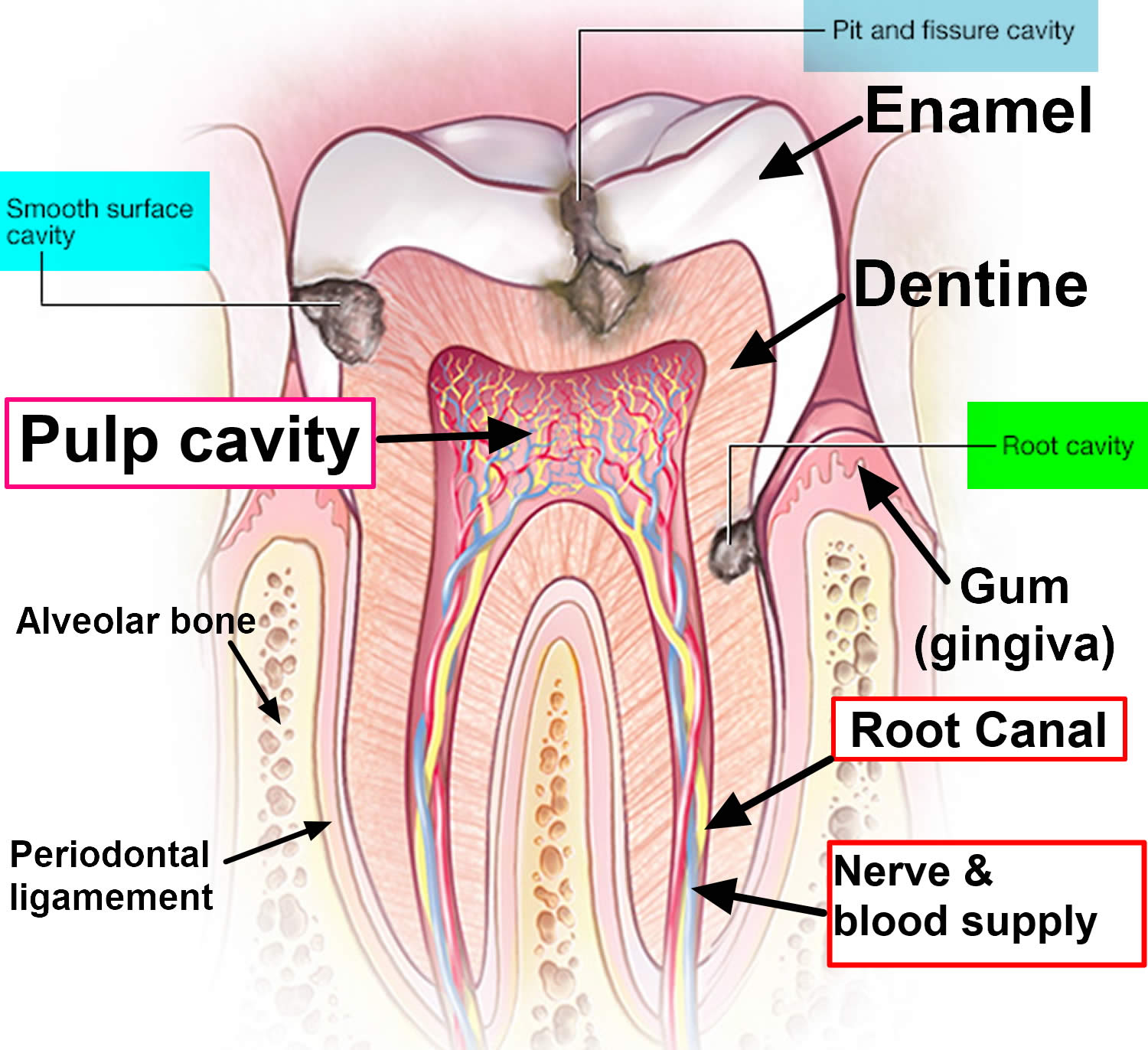
What causes an abscess tooth
Your mouth is full of bacteria, which form a sticky film on your teeth called plaque.
If you don’t keep your teeth clean, acids produced by the bacteria in plaque can damage your teeth and gums, leading to tooth decay or gum disease.
The following can increase your chances of developing a dental abscess:
- poor oral hygiene – plaque can build-up on your teeth if you don’t floss and brush your teeth regularly
- consuming lots of sugary or starchy food and drink – these can encourage the growth of bacteria in plaque and may lead to decay that can result in an abscess
- an injury or previous surgery to your teeth or gums – bacteria can get into any damaged parts of the teeth or gums
- having a weakened immune system – this includes people with certain underlying health conditions, such as diabetes, and those having treatment, including steroid medication or chemotherapy
Dental caries, dental trauma, and poor dental hygiene are the most frequent causes of a dental abscess. Break down in the protective enamel of teeth allows for oropharyngeal bacteria to enter the tooth cavity (pulp cavity) causing a local infection. As this infection within the pulp cavity grows within the limited space of the tooth, it compresses the inner dentine walls causing severe pain. This infection then tracks down through the root canal and inferiorly into the mandible or superiorly into the maxilla depending on the location of the infected tooth. Another cause that predisposes individuals to a dental abscess is a partially erupted tooth, most commonly a wisdom tooth, where bacteria get trapped between the crown and soft tissues causing inflammation. Other causes include genetic causes such as amelogenesis imperfect that predispose individuals to weakened enamel, more susceptible to wear. Mechanical causes tooth grinding breaks down tooth enamel. Medical conditions like Sjogren syndrome the cause dry mouth which accelerates oropharyngeal microbial growth. Chemical irritants such as smoke from methamphetamine, immunosuppression arising from chemotherapy, or chronic immunosuppressive medical conditions such as HIV/AIDs can predispose individuals to dental caries.
Dental abscess prevention
You can reduce your risk of developing dental abscesses by keeping your teeth and gums as healthy as possible.
Gently brush your teeth and gums twice a day with a fluoridated toothpaste. You should also visit your dentist regularly for a check-up and cleaning.
Good oral hygiene. That means brushing your teeth for two minutes at least twice daily — in the morning and before going to bed — and flossing at least once a day. Better yet, brush after every meal or snack or as your dentist recommends. Flossing before you brush allows you to clean away the loosened food particles and bacteria.
To do this, you should:
- Use floss or an interdental brush at least once a day to clean between your teeth and under the gum line
- Brush your teeth with a fluoride toothpaste twice a day – spending at least two minutes each time
- Avoid rinsing your mouth with water or mouthwash after brushing because this washes the protective toothpaste away – just spit out any excess toothpaste
- Cut down on sugary and starchy food and drinks – particularly between meals or shortly before going to bed
- Visit your dentist regularly – your dentist can suggest how often you should have a check-up, based on your oral health
Good oral and dental hygiene can help you avoid cavities and tooth decay. Here’s how:
- Floss your teeth at least once a day to remove plaque and food that’s stuck between your teeth after eating. Bedtime is an important time to floss.
- Brush your teeth with fluoride toothpaste after eating or drinking or at least twice a day. The American Dental Association recommends brushing your teeth twice a day with fluoride toothpaste. Bedtime is an important time to brush.
- Brush up and down in a circular motion. When you brush your teeth, you help remove food and plaque — a sticky white film that forms on your teeth and contains bacteria. After you eat a meal or snack that contains sugar, the bacteria in plaque produce acids that attack tooth enamel. Repeated attacks can break down tooth enamel and lead to cavities. Plaque that isn’t removed can also harden into tartar, making it harder to keep teeth clean.
- Gently brush your gums as well to keep them healthy.
- Limit or avoid sweets and sugary drinks, like soda or juice. Whenever you eat or drink beverages other than water, you help your mouth bacteria create acids that can destroy tooth enamel. If you snack or drink throughout the day, your teeth are under constant attack.
- Drink some tap water. Most public water supplies have added fluoride, which can help reduce tooth decay significantly. If you drink only bottled water that doesn’t contain fluoride, you’ll miss out on fluoride benefits.
- Consider dental sealants. A sealant is a protective plastic coating applied to the chewing surface of back teeth. It seals off grooves and crannies that tend to collect food, protecting tooth enamel from plaque and acid. The Centers for Disease Control and Prevention (CDC) recommends sealants for all school-age children. Sealants may last for several years before they need to be replaced, but they need to be checked regularly.
- Consider fluoride treatments. Your dentist may recommend periodic fluoride treatments, especially if you aren’t getting enough fluoride through fluoridated drinking water and other sources. He or she may also recommend custom trays that fit over your teeth for application of prescription fluoride if your risk of tooth decay is very high.
- See your dentist twice a year for regular checkups.
- Ask about antibacterial treatments. If you’re especially vulnerable to tooth decay — for example, because of a medical condition — your dentist may recommend special antibacterial mouth rinses or other treatments to help cut down on harmful bacteria in your mouth.
- Combined treatments. Chewing xylitol-based gum along with prescription fluoride and an antibacterial rinse can help reduce the risk of cavities.
What type of toothpaste should I use?
It’s important to use a toothpaste with the right concentration of fluoride. Check the packaging to find out how much fluoride each brand contains.
- Adults should use a toothpaste that contains at least 1,350 parts per million (ppm) fluoride.
- Children don’t need to use special “children’s toothpaste”. Children of all ages can use family toothpaste, as long as it contains 1,350-1,500ppm fluoride.
- Children aged six and under who don’t have tooth decay can use a lower-strength children’s toothpaste, but make sure it contains at least 1,000ppm fluoride.
- Below the age of three, children should use just a smear of toothpaste. Children aged three to six years should use a pea-sized blob of toothpaste. Make sure children don’t lick or eat toothpaste from the tube.
Your dentist may advise you or your child to use a toothpaste with a higher concentration of fluoride, if you need it.
How to maintain good dental hygiene
Good dental hygiene means getting into the routine of thoroughly cleaning the mouth at least once or twice a day, though preferably after every meal. The following discussion considers some important aspects of keeping teeth clean such as brushing, flossing, mouthwashes, and other adjuncts to maintaining good dental health.
Never use toothpicks to remove trapped food from between your teeth, as you may damage your gums, which could lead to an infection.
Flossing
Floss before every brushing. Remember that using just a small bit of dental floss to gently slide debris from between the teeth goes a long way towards eradicating plaque and keeping the mouth free from bacteria.
Floss should be wrapped around the fingers then stretched tightly between the thumbs, or thumb and first finger, of each hand so that it can be eased carefully between teeth. The floss should be moved carefully up and down the side of each tooth, pushing the floss down just under the gum line.
Other interdental cleaning devices (those devices that clean in between teeth) such as interproximal brushes or wooden or rubber tips are also valuable for certain people including those with missing teeth, large gaps, areas where the gum line has dropped, crowded teeth etc. A dentist is trained to determine the individual needs of a patient, and determine which tool will be the most effective.
Figure 2. Dental floss wrapped around both middle fingers with a gap of 5-10 cm.
Figure 3. Flossing upper teeth. Note thumb and index finger used to floss through contact and then move up and down.
Figure 4. Flossing lower teeth. Note both index fingers used to floss through contact and then move up and down.
Figure 5. Floss continues to just below gum line.
Figure 6. Interdental pikster or interproximal brush used to clean in between teeth. This is especially useful for people who cannot use conventional dental floss, such as those who have bridges that join teeth together, and/or orthodontic treatment (this person has a metal retainer behind the lower front teeth).
Brushing
Brushing teeth for two full minutes with fluoride toothpaste and a brush that is small enough to manoeuvre around the inside, outside and top of every tooth in the mouth is considered necessary. Consider listening to an entire song whilst brushing teeth – this will be the appropriate time needed to clean teeth. Replacing a brush every three months has also been shown to be more effective in maintaining good dental health.
When buying a manual toothbrush, use one with soft bristles as this will protect gums from damage to a greater extent. Studies have shown that brushing harder will not remove more dental plaque. Consider investing in an electric toothbrush if more help is needed and it is difficult to use a manual toothbrush. The novelty of a fancy new toothbrush is motivation alone to brush more.
How to brush
- Press gently at a 45-degree angle. Scrub the side closest to the cheek (of the tooth and gum) for a few seconds using a small circular/vibratory motion. In the same manner, move slowly around your mouth until you get to the other side. Pay particular attention to the gum line.
- Once on the other side of the mouth, rotate the brush so that it rests against the tooth and gum (on the side closest to your tongue), and use the same angle and same circular scrubbing motion to return to the first tooth.
- Next, briskly brush along the top surface of the teeth.
- Then repeat the entire process on the upper or lower set of teeth (depending on start position).
- Do not neglect the roof of the mouth and tongue, as these places also harbor bacteria.
- Try to only spit out the toothpaste, rather than rinsing it all out after brushing, as this will reduce the effect of the fluoride in toothpaste.
Figure 7. Brushing teeth – the toothbrush is angled at 45-degrees to the gum and teeth. The brush points upwards when brushing the top teeth and points towards the floor when brushing the lower teeth. Note the bristles of the brush cover the gums and the tooth at the same time when brushing.
Figure 8. Brushing teeth
Important considerations when brushing
- Keep a routine and do not rush! It is important to keep routines with oral hygiene; otherwise it is easy to miss areas of the mouth. Unfortunately, the same areas are missed EVERY time and these areas get gum disease. If you start on the top, don’t rush the bottom teeth as these will tend to be worse than the top if this is the case.
- Make sure every tooth surface is cleaned! With the brush, it is possible to clean the top of your teeth, and the sides that are closest to your cheek and tongue! Make sure for every tooth, these surfaces are cleaned.
Mouthwashes
It is important to remember that if one cleans the teeth properly with brushing and flossing, there is no need for a mouthwash. To date, the best mouthwashes include an ingredient known as chlorhexidine gluconate. Any mouthwash with this ingredient should ONLY be used for short periods of time as it has problems such as altering taste, staining teeth and margins of fillings etc. Those mouthwashes containing thymol and cetylpyridinium chloride are effective, but to a lesser degree than chlorhexidine gluconate.
Recently, there has been the heated debate over alcohol containing mouthwash related to oral cancer. Some people have dismissed the link, however, one study in 2008 from an Australian journal proposed a link between oral cancer and mouthwash in non-smokers and non-drinkers, and fueled the debate over whether dentists should be recommending alcohol containing mouthwashes. More and more companies are releasing alcohol free mouthwashes in light of recent evidence. At the moment, alcohol containing mouthwash does not cause oral cancer; it simply has been linked with a higher incidence in some research.
High fluoride toothpaste, and CPP-ACP
High fluoride toothpastes should be used only in consultation with dental advice. They usually have five times the fluoride content of normal toothpaste and are advised in patients who are high-risk to dental decay. Other agents such as CPP-ACP (casein phosphopeptide – amorphous calcium phosphate), which are effective in helping remineralise the tooth, are being promoted in patients prone to erosion, dental decay, and dry mouth.
Dentist visit
Maintaining good oral hygiene involves going to the dentist every 6-12 months. The dentist is able to:
- Recommend cleaning techniques and products;
- Clean plaque and calculus from the teeth;
- Fill cavities that could lead to further tooth decay;
- Administer fluoride treatments;
- Treat mild gingivitis before it turns into periodontitis;
- Take radiographs; and
- Reinforce oral hygiene instruction over long term.
Children’s tooth decay and cavity prevention
Most children want sweets, but you can help to prevent problems by making sure they don’t have a large amount or very often, and particularly not before bed, when saliva flow lessens. Try not to give sweets or sweet drinks as rewards.
The best snacks for your child are fruit and raw vegetables. Try tangerines, bananas, pieces of cucumber or carrot sticks. Other good snacks include toast, rice cakes and plain popcorn.
Dried fruit is high in sugar and can be bad for teeth, so only ever give it to children with meals – for instance, as a dessert – and never as a snack between meals.
Fizzy drinks can contain large amounts of sugar, which will increase the risk of tooth decay. Fizzy drinks (both those containing sugar and sugar-free or “diet” versions) also contain acids that can erode the outer surface of the tooth. The best drinks for children over one year old are plain still water or plain milk.
Even unsweetened juices and smoothies contain sugars and acids. Restrict your child to no more than one small glass (about 150ml) of fruit juice or smoothie each day and only at mealtimes.
Teeth are at most risk at night because there is less saliva in the mouth to protect them. Water is the best drink to give at bedtime, but if you do give milk, don’t add anything to it. Chocolate-flavored drinks and milkshake powder usually contain sugars, which will increase the risk of decay.
A regular teeth-cleaning routine is essential for good dental health. Follow these tips and you can help keep your kids’ teeth decay-free.
From brushing their first tooth to their first trip to the dentist, here’s how to take care of your children’s teeth.
Toothpaste tips
- Start brushing your baby’s teeth with fluoride toothpaste as soon as the first milk tooth breaks through (usually at around six months, but it can be earlier or later). It’s important to use a fluoride paste, as this helps to prevent and control tooth decay.
- There’s no need to buy special “children’s toothpaste” brands. In fact, some of them don’t have enough fluoride in them to help prevent tooth decay.
- Children from the age of seven can use family toothpaste, as long as it contains 1,350-1,500 parts per million (ppm) fluoride. Check the toothpaste packet if you’re not sure, or ask your dentist.
- Children up to the age of six who don’t have tooth decay can use a lower-strength toothpaste, but make sure it contains at least 1,000ppm fluoride.
- Make sure children don’t eat or lick toothpaste from the tube.
- Below the age of three years, children should use just a smear of toothpaste.
- Children aged three to six should use a pea-sized blob of toothpaste.
Toothbrushing tips
- Brush your child’s teeth for about two minutes twice a day: once just before bedtime and at least one other time during the day.
- Encourage them to spit out excess toothpaste, but not to rinse with lots of water. Rinsing with water after tooth brushing will wash away the fluoride and make it less effective.
- Supervise tooth brushing until your child is seven or eight years old, either by brushing their teeth yourself or, if they brush their own teeth, by watching how they do it. From the age of seven or eight, they should be able to brush their own teeth, but it’s still a good idea to watch them now and again to make sure they brush properly and for about two minutes.
How to help children brush their teeth properly
- Guide your child’s hand so they can feel the correct movement.
- Use a mirror to help your child see exactly where the brush is cleaning their teeth.
- Make tooth brushing as fun as possible by using an egg timer to time it for about two minutes.
- Don’t let children run around with a toothbrush in their mouth, as they may have an accident and hurt themselves.
Fluoride varnish and fissure sealants
- Fissure sealants can be done once your child’s permanent back teeth have started to come through (usually at the age of about six or seven) to protect them from decay. This is where the chewing surfaces of the back teeth are covered with a special thin plastic coating to keep germs and food particles out of the grooves. The sealant can last for as long as 5 to 10 years.
- Fluoride varnish can be applied to both baby teeth and adult teeth. It involves painting a varnish that contains high levels of fluoride on to the surface of the tooth every six months to prevent decay. It works by strengthening tooth enamel, making it more resistant to decay.
- From the age of three, children should be offered fluoride varnish application at least twice a year. Younger children may also be offered this treatment if your dentist thinks they need it.
Ask your dentist about fluoride varnish or fissure sealing.
Will a dummy or thumb sucking harm my child’s teeth?
No, but they will encourage an open bite, which is when teeth move to make space for the dummy or thumb. They may also affect speech development. That’s why you should avoid using dummies after 12 months of age.
Thumb sucking won’t cause permanent problems, as long as the habit stops by the time your child gets their second teeth, but it can be a hard habit to break.
Discourage your children from talking or making sounds with their thumb or a dummy in their mouth, and don’t dip dummies in anything sweet, such as sugar or jam.
Tooth abscess signs and symptoms
Symptoms of an abscess in your tooth or gum may include:
- an intense, throbbing pain in the affected tooth or gum that may come on suddenly and gets gradually worse
- pain that spreads to your ear, jaw and neck on the same side as the affected tooth or gum
- pain that’s worse when lying down, which may disturb your sleep
- redness and swelling in your face
- a tender, discolored and/or loose tooth
- shiny, red and swollen gums
- sensitivity to hot or cold food and drink
- bad breath and/or an unpleasant taste in your mouth
If the infection spreads, you may also develop a high temperature (fever) and feel generally unwell. In severe cases, you may find it hard to fully open your mouth and have difficulty swallowing or breathing.
Tooth abscess complications
A tooth abscess won’t go away without treatment. If the abscess ruptures, the pain may decrease significantly — but you still need dental treatment. If the abscess doesn’t drain, the infection may spread to your jaw and to other areas of your head and neck. You might even develop sepsis — a life-threatening infection that spreads throughout your body.
If you have a weakened immune system and you leave a tooth abscess untreated, your risk of a spreading infection increases even more.
Tooth abscess prognosis
Prognosis for a dental abscess is very good. Prognosis can be quite poor if a dental abscess is left untreated; mortality rate can increase to 40% if patients develop mediastinitis from descending infection 1. Airway compromise may warrant intubation or placement of tracheostomy. Ascending infections through the sinuses or hematogenous spread to the brain increase mortality rate and carry a poor prognosis.
Tooth abscess diagnosis
In addition to examining your tooth and the surrounding area, your dentist may:
- Tap on your teeth. A tooth that has an abscess at its root is generally sensitive to touch or pressure.
- Recommend an X-ray. An X-ray of the aching tooth can help identify an abscess. Your dentist may also use X-rays to determine whether the infection has spread, causing abscesses in other areas.
- Recommend a CT scan. If the abscess has spread to other areas within the neck, a CT scan may be used to assess the extent of the infection.
Tooth abscess treatment
Dental abscesses are treated by removing the source of the infection and draining away the pus.
Depending on the location of the abscess and how severe the infection is, possible treatments include:
- Removing the affected tooth (extraction) – this may be necessary if root canal treatment isn’t possible
- Root canal treatment – a procedure to remove the abscess from the root of an affected tooth before filling and sealing it. The tooth may be capped with a crown to make it stronger, especially for a molar tooth. If you care for your restored tooth properly, it can last a lifetime.
- Incision and drainage – where a small cut (incision) is made in the gum to drain the abscess (this is usually only a temporary solution and further treatment may be needed)
Local anaesthetic will usually be used to numb your mouth for these procedures. More extensive operations may be carried out under general anaesthetic (where you’re asleep).
Antibiotics aren’t routinely prescribed for dental abscesses, but may be used if the infection spreads or is particularly severe.
Tooth abscess antibiotics
If the infection is limited to the abscessed area, you may not need antibiotics. But if the infection has spread to nearby teeth, your jaw or other areas, your dentist will likely prescribe antibiotics to stop it from spreading further. He or she may also recommend antibiotics if you have a weakened immune system.
Most dental abscesses can be treated with antibiotics to cover gram negatives, facultative anaerobes, and strict anaerobes 1.
Penicillins and cephalosporins can be used in odontogenic infections, but there is increasing antimicrobial resistance due to B-lactamase production. This increase in resistance would make using penicillins in conjunction with other antimicrobials such as metronidazole or an antibiotic with an extended spectrum like ampicillin-sulbactam and ampicillin-clavulanate more appropriate 1.
- Dosing: Ampicillin-sulbactam 3 g intravenously (IV) every 6 hours
- Dosing: Amoxicillin-clavulanate: 875 mg orally every 12 hours
- Dosing: Penicillin G 2 to 4 IV every four to 6 hours PLUS Metronidazole 500 mg IV or orally every 8 hours
- Dosing: Cefoxitin: 1 to 2 g IV every 4 hours
- Dosing: Cefotetan: 2 g IV every 12 hours
Macrolides should not be used the first line unless the patient has penicillin or cephalosporin allergy. There is increased resistance to macrolides and the bacterial species that exhibit resistance are anaerobic Streptococci and Prevotella species that are major colonizers of the oropharynx and often culprits in a dental abscess.
Metronidazole has excellent coverage against anaerobic organisms but lacks sufficient coverage against aerobic gram-positive organisms. It is recommended to use metronidazole in conjunction with penicillin to extend antimicrobial coverage to include aerobic gram-positive organisms 1.
- Dosing: Penicillin G 2 to 4 IV every 4 to 6 hours PLUS Metronidazole 500 mg IV or orally every 8 hours
Clindamycin is a good option for patients with allergies to penicillins and cephalosporins. Clindamycin overs coverage against gram-positive organisms, anaerobes, B-lactam resistant organisms and has good bone penetration. It was demonstrated that Clindamycin was equally as effective in treating severe odontogenic infections as Penicillin V 1.
- Dosing: Clindamycin 600 mg IV every 6 to 8 hours
For severe infections or in immunocompromised patients. Anti-pseudomonal antibiotics like fourth-generation or higher cephalosporins or extended spectrum penicillins like piperacillin-tazobactam should be considered. Carbapenems like meropenem should also be reserved for severe infections. Meropenem has activity against gram-positive and gram-negative organisms as well as resistant organisms.
- Dosing: Piperacillin-tazobactam 4.5 g IV every 6 hours
- Dosing: Meropenem 1 g IV every 8 hours
- Dosing: Cefepime 1 to 2 g IV every 12 hours
